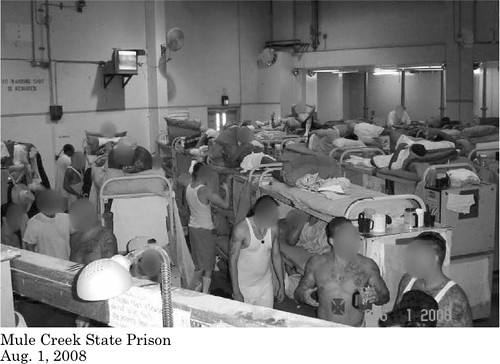 Court is putting finger on the scales toward a settlement
Court is putting finger on the scales toward a settlement
by Brian Leubitz
The Court has been pretty upfront with their displeasure with the progress on prison population reduction. But perhaps they are also less than thrilled with the simple private prisons option and see a ray of light with the proposals that the Senate Democrats brought to the issue. Either way, the Court granted the state four weeks, moving the date back from the end of the year until Jan 27, 2014. (PDF of the order). Here’s the important part for that delay:
The December 31, 2013 deadline shall be extended until January 27, 2014, without prejudice to the parties’ filing a joint request for a further extension or the Court so ordering. During the meet-and-confer process and until further order of the Court, defendants shall not enter into any contracts or other arrangements to lease additional capacity in out-of-state facilities or otherwise increase the number of inmates who are housed in out-of-state facilities.
Now, four weeks, you are thinking? Well, the judges have a plan for those four weeks. As mentioned in that last paragraph (actually the third of three paragraphs in the order), the state and the plaintiffs in the case were ordered to a negotiation process overseen by First District Court of Appeal Justice Peter Siggins. Justice Siggins will then notify the Three Judge Panel on Oct 21 whether there is hope for a settlement. Specifically, he was tasked with looking at a number of options to reducing populations, which apparently the Court finds preferable to the leasing additional capacity.
The meet-and-confer process shall explore how defendants can comply with this Court’s June 20, 2013 Order, including means and dates by which such compliance can be expedited or accomplished and how this Court can ensure a durable solution to the prison crowding problem. The discussions shall specifically include: (a) three strikers; (b) juveniles; (c) the elderly and the medically infirm; (d) Immigration and Customs Enforcement prisoners; (e) the implementation of the Low Risk List; and (f) any other means, including relocation within the state, that are included in defendants’ May 2, 2013 List. Justice Siggins and the parties may also discuss any necessary or desirable extension of the December 31, 2013 deadline beyond that provided for in the final paragraph of this order, as well as any other matters they deem appropriate.
These criteria are remarkably similar to a letter written by the ACLU to the Governor on how we could release prisoners without leasing additional capacity. So clearly the court is looking for an option beyond the Governor’s plan, and appreciates the dialog that the Legislature had with the Senate’s plan. Of course, at the heart of the Senate Democrats plan was a three year delay brought about by a settlement with the plaintiffs.
This is a lot of reading of tea leaves out of a three paragraph order. But if some progress can be made over the next four weeks, maybe we can spend a little more time reforming the heart of the troubling system as the Senate Democrats hoped to do.
